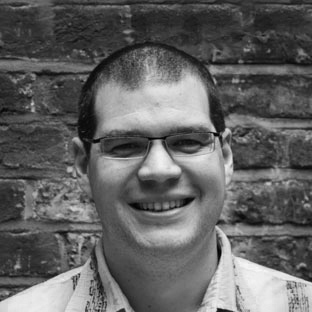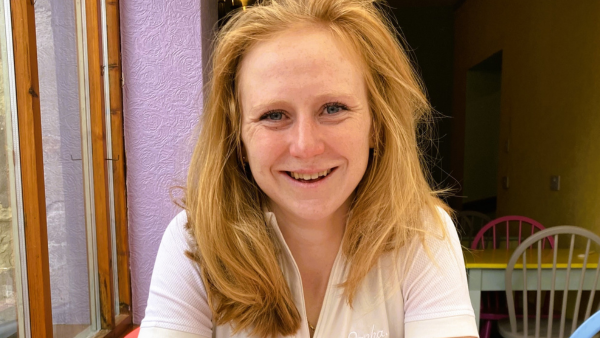"It is the long history of humankind (and animal kind, too) those who learned to collaborate and improvise most effectively have prevailed." - Charles Darwin
As you can imagine from working in a team that has Fellowship at its core, collaborative working is key to everything we do. Whether we’re preparing reports, creating events or developing new links, the old adage that no man is an island is a proven fact for me.
However often you practice it, collaboration is a skill which requires practice and reflection. Likewise, it is not a quality which comes as easily to everyone – we’ve all worked in situations where it has been apparent that collaboration is a real challenge for some of our peers, or indeed seems anathema to their way of working. My colleague Sam Thomas blogged about his thoughts on collaboration back in February and summed up brilliantly the approach that many of us take to solving problems – namely, putting our heads down and getting on with the task, blocking out the world until it is done. This is one way to solve a problem, and is the instinctive response for many people, however it misses out on the rich benefits which collaboration can bring to a project.
An anonymous quote I recently stumbled across helped me with how to approach this challenge: "We could learn a lot from crayons: some are sharp, some are pretty, some are dull, while others are bright, some have weird names, but we have to learn to live in the same box”. Collaboration requires an understanding of the skill sets of each individual; and space for them to work. It doesn’t mean forcing them into a working context which is not natural or successful for them. Going back to Sam’s example, successful collaboration would require my recognition of his preferences for solitude and cake – we can still find the shared spaces within out individual skill sets which allow us to work collaboratively, albeit not identically. As such I am going to briefly run through a few reflections on successful collaboration in the context of an event from my own experience. I will return in a later blog to explore my experiences of collaboration in the broader environment of developing and delivering projects within the Fellowship.
"We could learn a lot from crayons: some are sharp, some are pretty, some are dull, while others are bright, some have weird names, but we have to learn to live in the same box”
Plan
My colleagues (and indeed family) would testify to the fact that I am someone who often works best with looming deadlines. Although I enjoy the challenge of forward planning and strategic thinking, I am used to being able to ‘wing things’, to ad lib in the midst of the event (I even gave my wedding speech on the hoof). However this is not a comfortable position for everyone to be in, and does not recognise the surprises which can arise.
As an example, we recently had the 2012 Angus Millar lecture in Scotland, one of our key events in the annual calendar. Although a case study in collaboration in its own right, involving as it does the Millar family, RSA Scotland team, RSA External Affairs and RSA Fellowship, the delivery of the event on the evening sat primarily with me this year. With the event scheduled for the 1st November, my daughter decided to be born 11 days early, arriving on the 29th October and precluding my attendance at the event.
However, this was where the collaboration kicked in. I had prepared a plan for the evening that included working with a team of Fellows to designate their roles whether I was there or not, and ensuring that each key action had at least one, if not two attendees contributing to it. This guaranteed that I was indeed not missed at the event, and it flowed very well as a highlight for RSA Scotland. Relying purely on my own skills (which I have attempted to do in the past) would have been a disaster – instead it was important to involve others in the planning, to make sure that all bases were covered and that they were comfortable with what they were being expected to do.
However…
…no plan survives contact with reality. Regardless of how much planning is in place, there are always events on the evening which can throw up challenges. In this way it is vital to have clearly defined roles and boundaries. In a collaborative relationship it is important that each participant knows what contribution is expected of them, and the scope they have for decision making within it.
Successful collaboration is based upon relationships, and is not a simple act of delegation: collaborators can only be comfortable if they are confident in their responsibilities. To continue the Angus Millar lecture example, each of my collaborators was aware of their role for the event, whether it was registering attendees, meeting the speaker or bringing the RSA banner to the venue. At the same time, they were comfortable that they would not have to make decisions that they were unsure of. My boss, Michael Ambjorn, was joining us for the event and, in my absence, was designated as the final decision maker. This allowed others to focus on their own responsibilities, happy that he carried the weight of the world on his shoulders!
Successful collaboration is based upon relationships, and is not a simple act of delegation: collaborators can only be comfortable if they are confident in their responsibilities
Celebrate good times
Finally, as we discussed previously, collaboration takes hard work and practice, and isn’t natural for everybody. Therefore it is important to celebrate the contributions which each collaborator makes to the relationship. It is easy in the evaluation phase to focus on what went wrong; and incredibly easy in an organisation like the RSA to move straight on to the next event. However celebration acknowledges contributions and strengthens the relationships, leading to greater collaborative success in future. So finishing off the example of the Angus Millar lecture, my sincere thanks go to Alex Dunedin, David Jarman, Mike McCarron and Michael Ambjorn who were fantastic examples of collaboration in action.
So if you haven’t already, give collaboration a go, the RSA as an organisation is a hot bed of collaborative activity, and there are numerous ways that you can participate: through RSA Catalyst, RSA Skillsbank and the activity in the Regions and Nations (and indeed internationally).
I would love to hear of examples of collaboration from your own experience – please drop me a line if you have any you would like to share.
Jamie Cooke is Deputy Head of Fellowship, with responsibility for the Specialist Programme team. You can follow him @JamieACooke or connect with him on LinkedIn.
Related articles
-
Rachel Drapper: Featured Fellow Q&A
Rachel Drapper
Rachel Drapper, CEO and founder of Fairshare, discusses domestic labour inequity, gender roles and the way forward for those in our community who are striving for equity inside and outside the home.
-
RSA Fellows making an impact in the LGBTQ+ community
Maeve Devers Kirby Fullerton
Learn about just a handful of RSA Fellows doing innovative work to bring about social change in the LGBTQ+ community.
-
Comment at the RSA: coming full Circle
Mike Thatcher
The RSA has launched a Comment 'space' on its Circle community platform as it moves to a Circle-first approach for comment articles authored by Fellows.




Be the first to write a comment
Comments
Please login to post a comment or reply
Don't have an account? Click here to register.